Texas Eagle
.jpeg)
| Route 66 | Cities | Beaches |
|
Texas Eagle |
.jpeg) |
Sunset Limited |
Palmetto |
Crescent |
VIA |
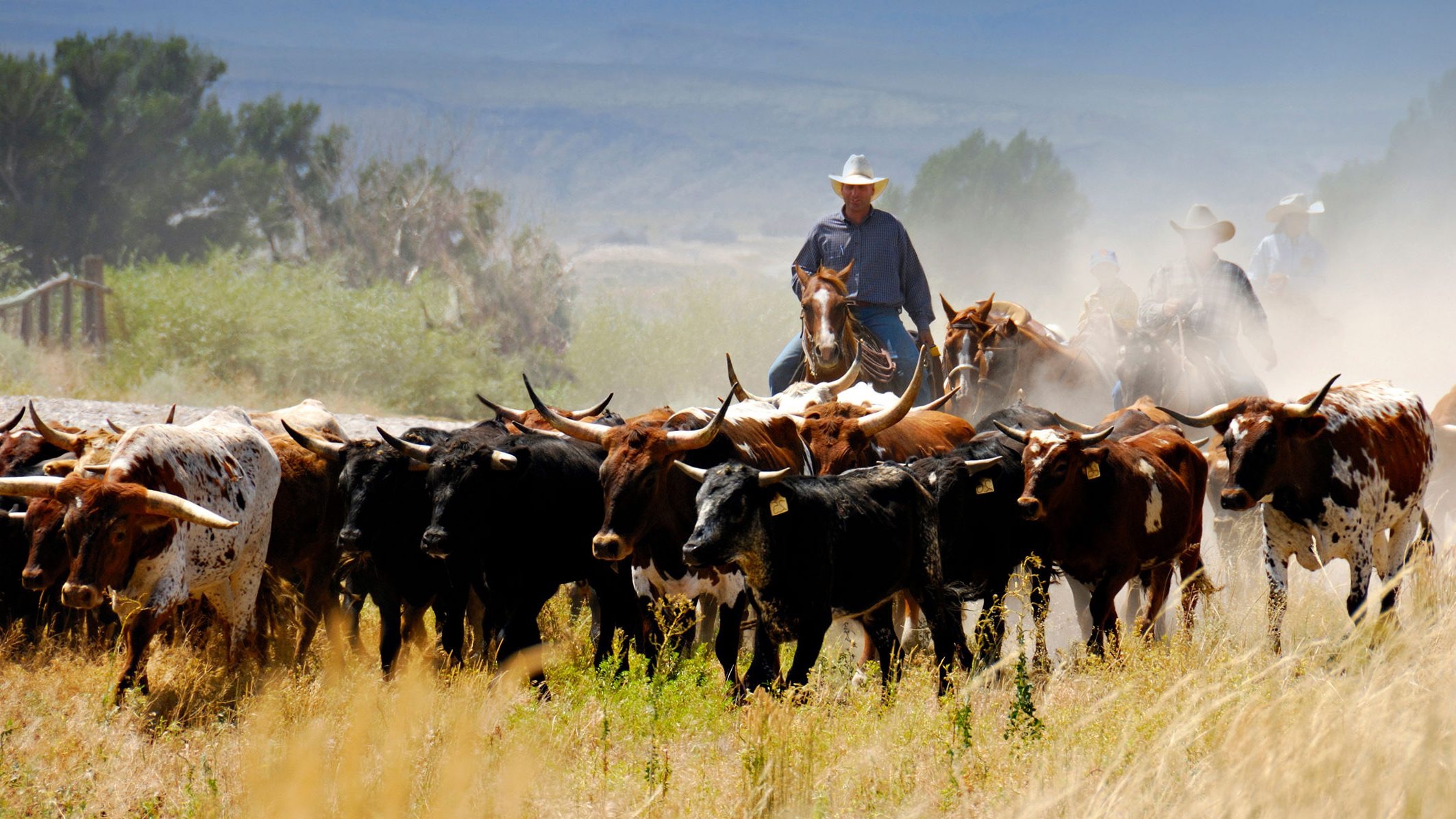 |
The Texas Eagle is a special train for several reasons, the first of which is it's Amtrak's longest trip. It takes three full days to travel from L.A. to Chicago. The second reason is it travels through the heart of America's classic Old West. The third reason is it runs along the border for half a day. You're literally within yards of the border. From a south facing window you're looking out across Mexico. The fourth reason is you pass near six national parks. The train is often filled with backpackers. The fifth reason is you're travelling through the Sonoran Desert for more than 24 hours. This is one of the world's unique eco systems and you get to watch it drift by from the comfort of your Amtrak seat. And, finally, you stop at six of the most interesting cities in America. This would be a great train to use Amtrak's rail passes that allow you to leave the train, spend a few days, then get back on and travel to the next city. |
Sadly, you begin your Texas Eagle journey in late evening darkness. You stop at Needles and Yuma at night. Needles is officially the hottest city in America, being close to Death Valley. Five months a year, Needles sees 120 degree days and 90 degree nights. Swimming pools in Needles are like hot tubs. The next stop is Yuma, which is surrounded on three sides by Mexico. It was a historic outlaw hideout, being so far from anywhere across hostile desert no lawmen came here. Today Yuma is a departure point for Organ Pipe Cactus National Park. It is also a popular retirement and tourist city and crossing point into Mexico. The Rio Grande flows around the city, allowing paddling and tubing. |
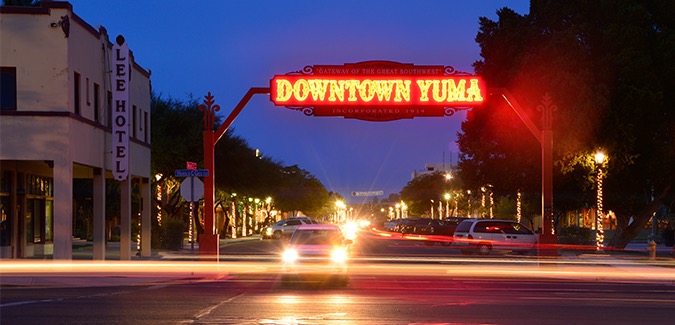 |
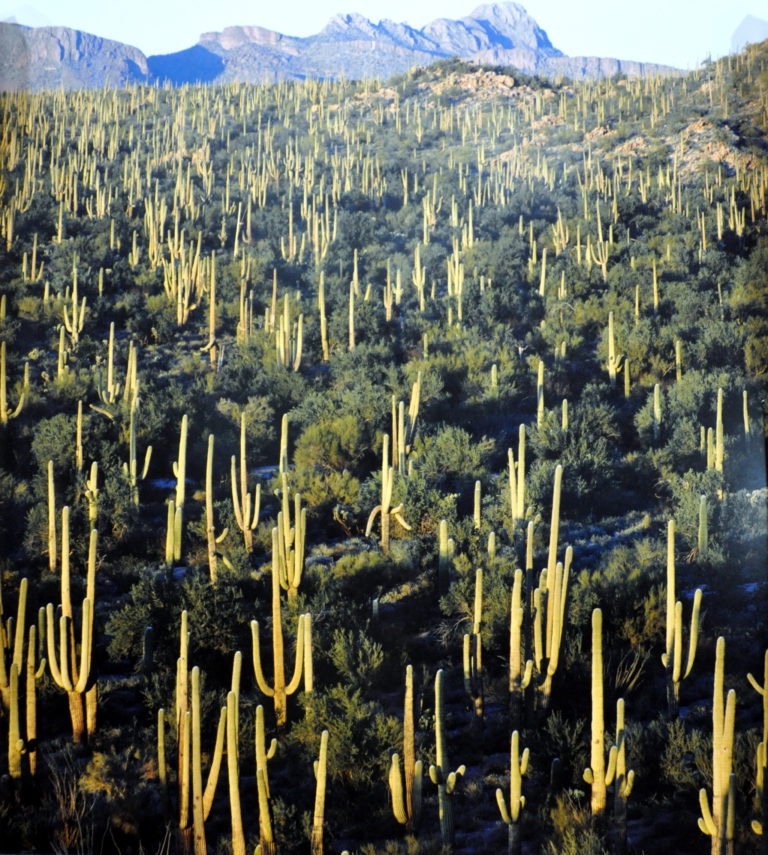 |
As you awaken the first morning on the Texas Eagle, you'll look out your window at hillsides of Saguaro Cactus Forest. This majestic plant, largest of the Cacti, grows 40 feet tall and averages 150 years in age. They grow only in the Sonoran Desert. Many species of birds and small mammals burrow holes and live inside Sagauro, just as they do in hard wood trees elsewhere. If the Saguaro you see are relatively thick, the area has recently had rain. If the Saguaro are slender, the area has been without rain for a while. Saguaro soak up water during and after a rain, becoming two or three times as big. Then they will slowly use up that water and shrink day by day for months until they are slender stems. The inside of a Saguaro is like a huge sponge. Cowboys, miners and desert travellers learned from the Apache, Comanche and Mestizo to cut a section out of a Saguaro and squeeze it for the water. Organ Pipe Cactus National Park was created specifically to protect the Saguaro. Many other species of Cacti live there, and along the Texas Eagle route, but the Saguaro is the symbol of the Sonoran Desert, as it can live nowhere else. Damaging or destroying a Saguaro is a state and federal crime and brings jail time and heavy fines. |
Organ Pipe Cactus National Park will pass south of the tracks. It was created to serve as a sanctuary for the Saguaro, but protects another 100 Cactus, birds, wildflowers, and animal species. It's a beautiful place. There's no lodge. You stay in the town of Ajo. There are outstanding hiking and backpacking trails. The best place to get off the train, rent a car and drive to Organ Pipe is Maricopa. Heading westward the Texas Eagle arrives there about 9 pm., so you can stay overnight in a Maricopa hotel and drive south in the morning. Heading eastward the train arrives there about 6 a.m., so you can eat breakfast at a nearby restaurant, rent the car and drive south. It's a 90 minute drive. The Sonoran Desert Inn & Conference Center is the best place to stay in Ajo. There are several restaurants, mostly Mexican. The park's southern boundary is the Mexican border, so there's a steady flow of illegal immigrants through the area, but so far they have not bothered tourists. They mostly surrender to border patrol agents and request asylum. |
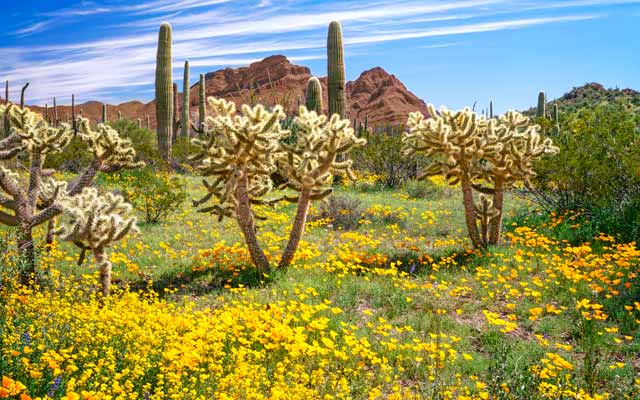 |
 |
Most people who have never visited the Southwest envision the desert as a table top flat landscape. But as you ride the Texas Eagle you learn that the desert is rarely level. Small hills and rocky mountains continuously jut upward. The hills are usually bare, while those high enough to be called mountains have trees and grass. With a good pair of binoculars, especially at dawn and dusk, you can often spot Javalina, Sonoran Pronghorn Antelope, Ringtail Raccoon (which are much more slender and look more like cats than raccoons except for the head and face), Gray Wolves, Bobcats, Jaguars, Ocelots, and the ruler of the desert, the Sonoran Mountain Lion. Living in or on the Saguaro Cactus are Elf Owls, Desert Wrens and the Sonoran Gila Woodpecker. Look down on the ground close to the train for Scorpions, Roadrunners, Sonoran Squirrels, Gila Monsters, and Gopher Tortoises. |
| As the Texas Eagle crosses into Texas, the tracks drop right alongside the Mexican border. From a south facing window you'll be looking at the border fence which has become such a political issue lately. You'll be coming through here just after noon, so there will be little activity. If you were to come through between midnight and dawn, if the Moon were out, you could actually see illegal immigrants climbing the fence. It's a very sensitive issue. Most of the illegals are coming from Central American countries such as Venezuela, Guatamala, Honduras and Nicaragua. They are, individually, good hardworking people who just want to escape the crime, violence and extreme poverty of their home villages and make a better life for themselves. The problem is not with the individual. The problem lies with the sheer numbers : over a million are already in the U.S. and they keep coming. Towns and cities in the Southwest do not have the housing and cannot build it fast enough. So these migrants end up living in tents and cardboard boxes. Very few of them have any skills or formal education, so except for picking crops, washing dishes, mowing lawns or cleaning rooms, their job prospects are slim. The problem keeps increasing and no one has a solution. |  |
 |
You may have slept through the Yuma stop, but you should be wide awake at El Paso, and you'll notice increased security around the train and the station, including dogs. Conductors and car attendants are checking everyone's tickets extra carefully. This is because illegal immigrants try to board trains and buses to get to the interior of the country. Drug smuggling across the border is also a problem here, and getting the drugs on board trains and buses is one way to move them to northern states. Yuma's mayor has declared a State Of Emergency as his city tries to deal with the problems. El Paso has not gone that far, but struggles with the same issues. As the Texas Eagle passes through El Paso, you'll notice the fence, which sometimes becomes a wall, continues through the city, dividing it in half. The half on the other side is actually not El Paso, but Cuidad Juarez. With your binoculars or telephoto lens, you can find the border gate (photo left), where guards use x rays, laser beams, dogs and personal inspection to carefully check people and vehicles crossing the border. Those are U.S. Border Patrol officers on this side of the fence, and Mexican Federales on the other side. |
Guadalupe Mountains National Park is north of the railroad tracks on the New Mexico - Texas line. The view you get is of a dry, uninviting place, but beyond this outer rim is a high plateau of streams, rich grass and trees. It is a prime hiking and backpacking park, but is also home to many large mammals. There is no lodge but there is camping. The Guadalupe Mountains are one of the "sky islands" which dot the southwestern desert. They are surrounded on all sides by low elevation desert which animals cannot cross. Species are stranded, and have evolved on their own with some unique characteristics. |
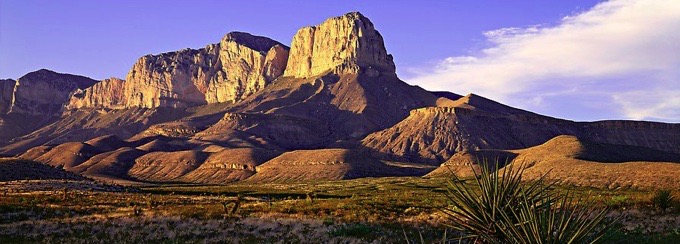 |
 |
Carlsbad Caverns National Park is also just north of the railroad, although you never actually see any part of the park. Carlsbad is recognized as the most beautiful cave in the world. (It's not the biggest; that would be Mammoth Cave in Kentucky). It's definitely worth a stopover. You could rent a car, drive to the park, and take one of the several hours long cave tours. There is neither a lodge nor a restaurant in the park. Motels and restaurants are in nearby White's City and Carlsbad. There is no campground but you can primitive camp 100 yards off the roads and paths. For both Guadalupe and Carlsbad, your best access would be to get off the train at El Paso, rent a car and drive out state route 62. Guadalupe is about 90 minutes, Carlsbad two hours, which includes the time it takes to get out of El Paso. For hiking and/or camping, Summer is not a good time. A Spring or Fall trip would be far better. Winter is possible, with daytime temps in the mid 50s and nights in the 30s. |
| If you decided to visit Guadalupe and Carlsbad Caverns, you should drive an hour north to Roswell. In 1947 a flying saucer skimmed low over town and crash landed in the desert. People snapped photos of it over town, and rushed out to the crash site, snapping more photos. There appeared to be something at the controls similar to but not quite human. Townspeople were attempting to help it out of the cockpit when a U.S. military caravan appeared. They rushed everyone out of the area. Over the next 24 hours they erected a high fence around the area with armed guards. Eventually they erected several quonset huts. The rational story was that it was an Air Force experimental aircraft. It was also possible it was a Russian surveillance aircraft. But townspeople insisted it was an alien spacecraft. The whole town has rethemed itself as Earth's alien capital. There is the International Alien Museum & Research Center, the Alien Art Center, stores selling alien themed items, a flying saucer shaped Mcdonalds, alien themed streetlights, alien motels, alien restaurants, guided tours, etc. | 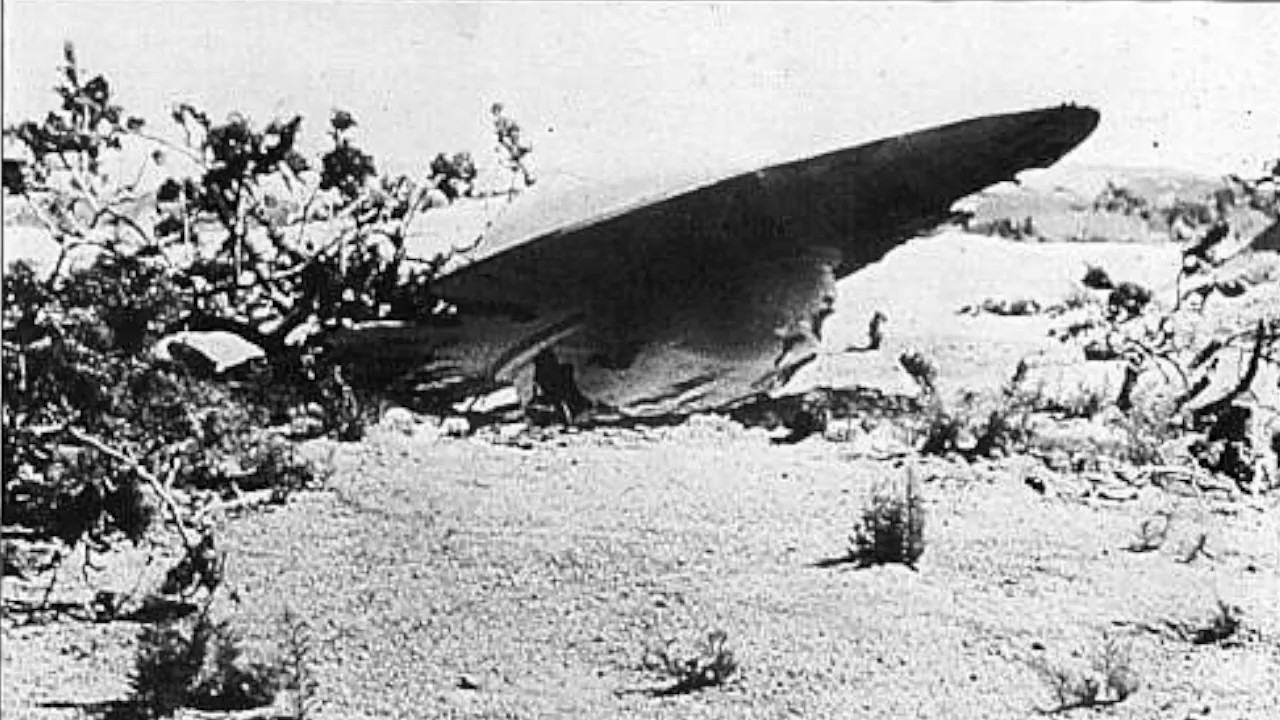 |
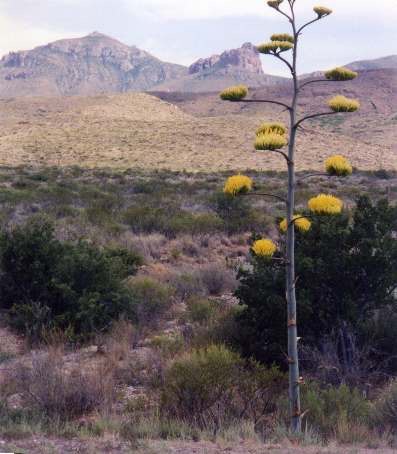 |
As you pull out of El Paso, the tracks turn away from the border and the Rio Grande and begin to climb. For the next 14 hours you'll be crossing the Texas High Country. This is the Texas of myth and legend, where Commanches, Apaches, cowboys, outlaws, the Texas Rangers, cattle barons, and oil prospectors gave Hollywood a rich mix of characters to feature. It's a dramatic landscape, with few towns or roads even today. One such town is Alpine, where backpackers and tourists disembark, rent cars and drive south to Big Bend National Park. You've left the Sonoran Desert behind and entered the northern reaches of the Chihuaha Desert. Here the Saguaro is replaced by the Agave Havard, a spindly plant with beautiful yellow flowers. They live for 50 years. They provide fiber for ropes and sandals, and are the source of Tequila. The flowers are the key source of nectar for Desert Bats. There are several species of Agave growing up here but Havard is the most iconic. This is the northernmost extreme of its range, so they're not plentiful. 100 miles south, in Mexico, they grow in dense stands. You'll also see lots of Ocatillo Cactus, with a dozen leaves growing out from a single base, all producing a bright red flower. |
The Texas Eagle doesn't treat San Antonio fairly. This historic town has one of the most beautiful stations in America, as seen at right. Inside the station is America's #1 Mexican restaurant, Aldaco's. Only two blocks away is the Alamo and the Crockett Hotel, a block beyond that is the Riverwalk, and beyond that is a large Mexican marketplace. The Eagle stops here for two hours, plenty of time to see some of these attractions. But it does so from 5 - 7 a.m. Most through passengers don't even wake up until the train is pulling out. On the westward trip, the Eagle stays five hours, but still in the middle of the night. That's a shame for another reason. The Eagle spends those hours changing crews, being serviced and being rearranged. Half of the cars and the dining car are uncoupled, given another engine, and sent on to New Orleans as the Sunset Limited. The Eagle then gets its own dining car and proceeds to Chicago. Heading westward, the cars coming from New Orleans are coupled onto the Eagle to continue on to Los Angeles. But very few are awake to see all this. |
 |
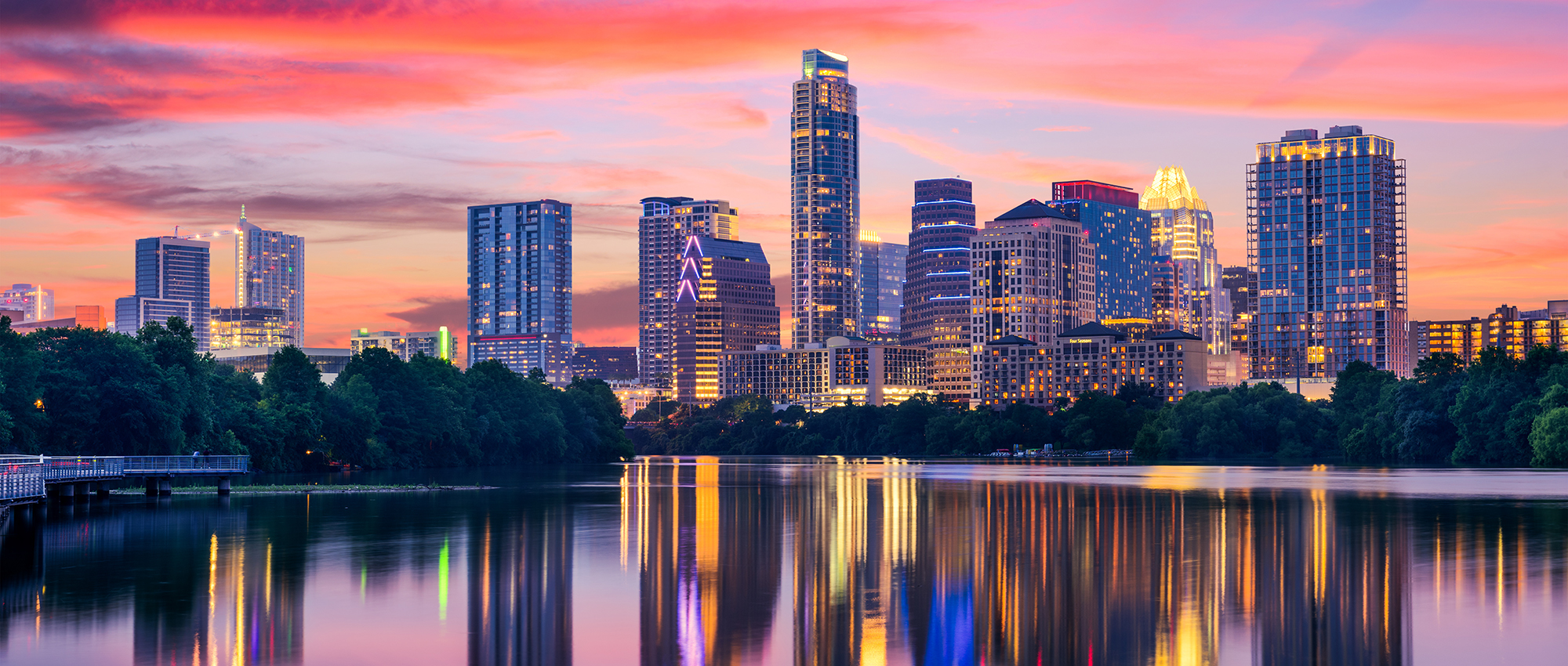 |
Austin is another city worth a day or two stopover. It is, of course, the state capitol, and home of the University of Texas. Those two attractions alone can take up a day. But Austin has also become the music and art center of Texas. They've cleaned up and landscaped the river and there's canoeing, kayaking and paddle boarding on it. There are museums, parks, several hundred good restaurants, and unique stores. Unlike Yuma and San Antonio, Amtrak in either direction arrives and departs from Austin in the daytime, not in the middle of the night. |
From Austin, the Texas Eagle heads up through East Texas. Most of Arkansas and part of Missouri are crossed in darkness. On the third morning you get a great view of St. Louis and the Gateway Arch. If you haven't visited the Arch, St. Louis would be a deserving day's stopover. There's a museum, documentary film, and a ride up the Arch itself in small cars. Riverboats offer hour or two cruises up and down the Mississippi. You could catch a Cardinals game at the stadium. Then it's off across Illinois. Barring unexpected delays, the Eagle pulls into Chicago in early afternoon. Lunch will be your last meal on the train. |
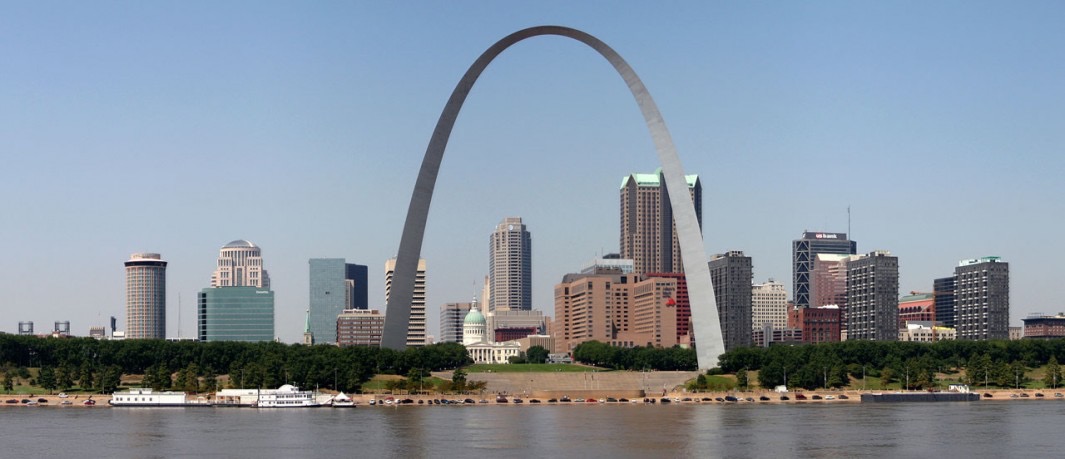 |
|
|||
|